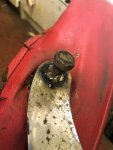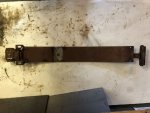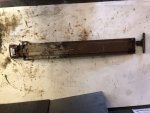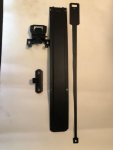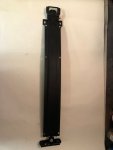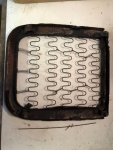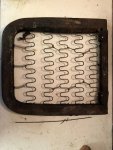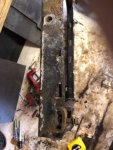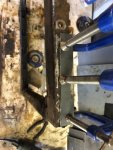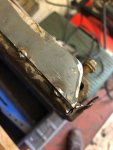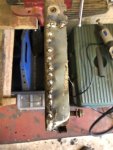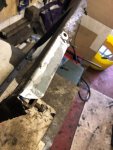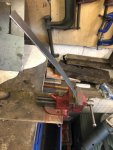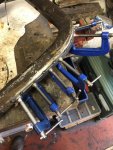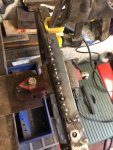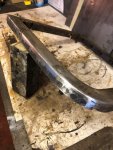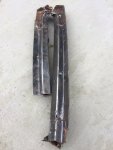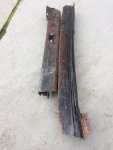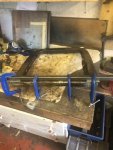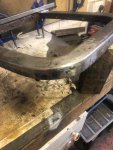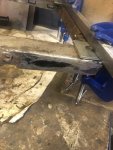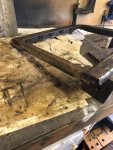Having received a new speedometer second worm (metal not plastic) on next day post from CK I took a bucketful of beta blockers, a deep breath and after a few tries managed to rejoin the speed cup to the field plate. The tang of the (very delicate) needle return spring has to be threaded through a hole in the casing and glued in place - it needs steady hands and delicate fingers. It's some while since I had either, but persistence wins in the end.
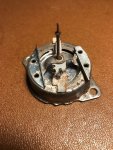
On the main frame the new second worm was installed.
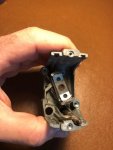
And the whole lot then put together - this photo was taken after the number clusters and jewel plate - the 'cross member' on top of the clusters - installed.
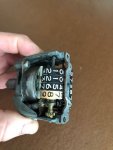
The speedo faceplate screws were painted as they were rusty
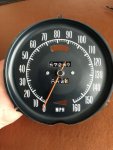
And then installed in the dash.. Front and reverse
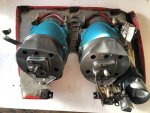
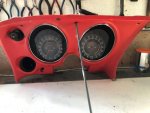
The vent was reworked a little to remove some slack from the mechanism and the light switch refitted.
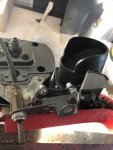
As far as I can tell at this stage everything seems to work fine. I haven't done anything with the dash covering so far and will kick that particular can down the road for a while until I have worked out what to do.
Coincidentally on YouTube 'The CorvetteBen' posted a video this week to do a very similar job. The reverse of his dash (a '75 rather than '72) was similarly rusted and had seized and broken in exactly the same places. His task was to replace the electronic tacho board but much of the work was the same. It's worth a watch if you need to do something similar and all his videos are very interesting and you can a lot from them - I know I have.

On the main frame the new second worm was installed.

And the whole lot then put together - this photo was taken after the number clusters and jewel plate - the 'cross member' on top of the clusters - installed.

The speedo faceplate screws were painted as they were rusty

And then installed in the dash.. Front and reverse


The vent was reworked a little to remove some slack from the mechanism and the light switch refitted.

As far as I can tell at this stage everything seems to work fine. I haven't done anything with the dash covering so far and will kick that particular can down the road for a while until I have worked out what to do.
Coincidentally on YouTube 'The CorvetteBen' posted a video this week to do a very similar job. The reverse of his dash (a '75 rather than '72) was similarly rusted and had seized and broken in exactly the same places. His task was to replace the electronic tacho board but much of the work was the same. It's worth a watch if you need to do something similar and all his videos are very interesting and you can a lot from them - I know I have.


